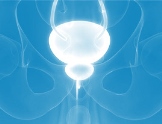Methodology: Liquid Chromatography-Tandem Mass Spectrometry (LC-MS/MS)
Test indicators: 11 kinds of unsaturated fatty acids-palmitoleic acid, oleic acid, eicosaenoic acid, α-linolenic acid, EPA, DHA, DPA (ω-3 series), linoleic acid, γ-linolenic acid, Arachidonic acid, DPA (ω-6 series)
Sample type: serum
Specification: 96 servings/box
Clinical significance
Precise nutritional assessments have found the lack of essential fatty acids and supplemented them to protect the health of mothers and babies.
Evaluate the effect of parenteral nutrition fat emulsion injection to provide a basis for clinical nutrition therapy.
Monitor the level of unsaturated fatty acid components to warn of cardiovascular disease.
Control the balance of omega-3 and omega-6 fatty acids.
Beneficial unsaturated fatty acids
Fatty acids, like vitamins and amino acids, are one of the most important nutrients for the human body. Unsaturated fatty acids have a lipid-lowering effect, which can reduce the levels of "bad" lipids-blood cholesterol (TC), triglycerides (TG) and low-density lipoprotein cholesterol (LDL-C), and at the same time, increase The content of "benign" lipids, high-density lipoprotein cholesterol (HDL-C), makes blood vessels smoother, healthier and more elastic, and prevents the occurrence of atherosclerosis. Among them, EPA and DHA not only have the effects of lowering cholesterol, softening blood vessels, etc., they are extremely important for the growth and development of fetuses and infants, especially the development of brain and vision.






